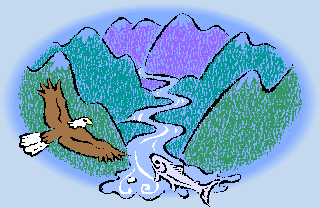Water News for September 2012
While you were celebrating Mexican Independence Day and holding your ears to block out attack ads, a lot of important things happened in the interesting world of water. Read on to hear all about it.
One of the most influential books of our time was published fifty years ago this month
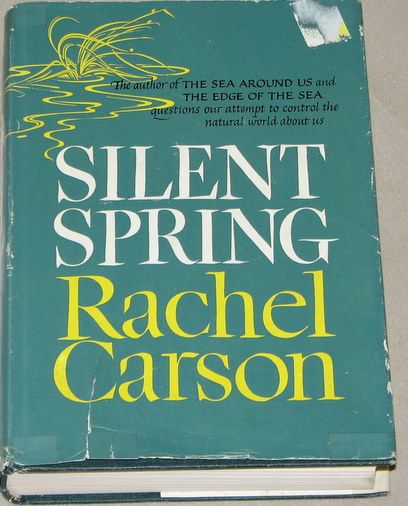 |
September of 2012 marks the 50th anniversary of the publication of one of the most influential books of modern times, Rachel Carson’s Silent Spring.
Carson’s 1962 book, which focused on what the author saw as the alarmingly widespread and detrimental use of pesticides, is considered an important catalyst for the modern environmental movement and a strong contributor to the creation of the US EPA . More from the Pure Water Gazette.
|
In 2012 Arctic Ice Reached the Smallest Volume Ever Recorded
In 2007, 27 percent of the Arctic Ocean was covered with ice. That was the lowest percentage ever recorded, but this year, 2012, only 24 percent of the Arctic’s surface was covered with ice at the end of the summer.
One research scientist said, “The Arctic is the earth’s air-conditioner.” When the ice recedes in the Arctic region, it isn’t just the humans and animals who live in the region that feel the effect. The entire planet is affected.
More information on Arctic ice melts from the New York Times.
Large corn and soy farms are mostly to blame for the Algae Blooms on the Great Lakes
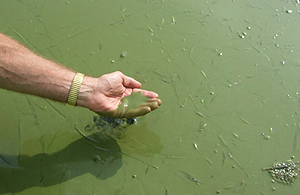 |
If the current drought has an upside, it is that the Great Lakes may get some relief from algae blooms that form the “green slime” that’s been getting steadily worse in recent years. That’s because this year’s drought conditions are expected to dramatically reduced the number and intensity of heavy spring rains that wash farm field fertilizers into agricultural watersheds that drain into the lakes.
More |
In Wichita, Portland, and Phoenix the Fluoride Debate Goes On (and On and On)
At present, 97% of the western European population drinks non-fluoridated water. In most advanced countries, fluoridation has been tried and rejected.
In the United States, 64% of the population lives in areas where the public water supply is still fluoridated.
And, in the US, the debate goes on.
In early September 2012, two large U.S. cities considered whether to start fluoridating their water or to stop the practice altogether. A third will put the issue to the voters in November.
Portland, Oregon (pop. 593,000) is the largest city in the nation not to add fluoride to its drinking water. On September 12, the city council decided to change that, voting to start fluoridation in 2014. The decision will add fluoride to the drinking water of some 900,000 residents in the metropolitan area.
It is possible, however, that voters will have a say before then. Opponents of the measure said they will gather signatures for a ballot referendum.
In Phoenix, that same day, a city council subcommittee decided to let its fluoridation policy stand and continue the practice.
In Wichita, Kansas, which does not fluoridate, voters will have the last word. This year, citizens gathered enough signatures to force the city council to consider the issue. The council could have taken action itself, but pushed the decision onto the public as part of the November 6 ballot.
Reverse Osmosis and Refrigerators: A Perfect Match, with a Few Problems
by Gene Franks
As refrigerators get more complex and offer features such as cold water dispensers, it is becoming more common to feed them with high quality water from an undersink reverse osmosis (RO) unit. The challenge in such hook-ups is providing sufficient water pressure for the refrigerator, especially since many of the newer refrigerators and ice machines require more feedwater pressure than older models.
With simple filters, just teeing into the undersink filter's faucet tube works fine, since filters put out essentially the same pressure as the tap water source. With reverse osmosis unit's, however, a standard system puts out only about 2/3 of the tap water pressure when the RO storage tank is full, and, of course, less as water is taken from the storage tank.
If city water pressure is strong--say, 60 psi or more--a standard reverse osmosis unit will usually rise to the occasion and supply plenty of water pressure for the refrigerator. With low city pressure or with well systems that have variable pressure, however, the RO unit may need some help.
Various devices are used to enhance pressure output of RO units when they send water to a remote point of use like a refrigerator. Here's a look at the most common of these.
1. Booster Pumps. The most commonly know of these are the popular Aquatec 6800 and 8800 booster pumps. These are electric pumps that increase the water pressure going into the RO unit. This, in addition to making the unit run more efficiently, increases the pressure coming out of the storage tank, but the out-of-tank pressure is limited to about 40 psi. (There are tank switches that will run the pressure up to 60 psi, but we don't recommend this for most residential users.)
2. Permeate Pumps. These non-electric pumps do not increase inlet pressure but they isolate the RO unit from the back pressure from the storage tank, allowing it to run much more efficiently. They can be installed with or without a hydraulic shutoff valve. Without the valve they will put much more pressure into the storage tank (and this is what we recommend if your aim is to send higher pressure to your refrigerator).
3. Demand, or Deliver Pumps. These electric pumps are installed after the RO unit and they push water directly from the output of the RO unit to the point of use--e. g., the refrigerator. They can deliver water with pressures up to 80 psi. They work on demand. When the icemaker calls for water, or if you activate the drinking water dispenser, the pump comes on and sends water to the refrigerator.
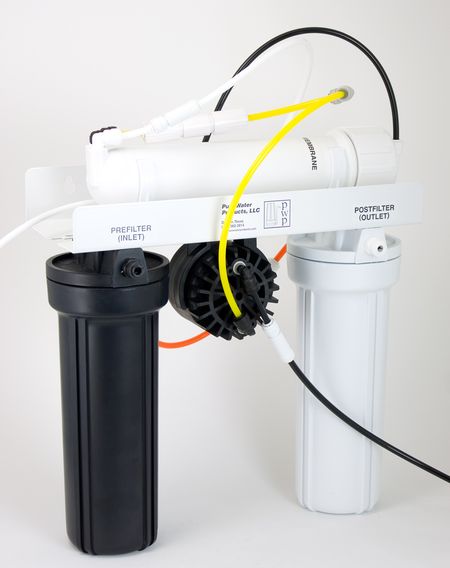 |
| Pure Water Products' Black and White reverse osmosis unit with permeate pump (the black object in the center) installed on the frame. The permeate pump saves a significant amount of water in addition to putting almost 100% of the tap water pressure into the storage tank (not shown). The pump increases the water pressure to the refrigerator or icemaker by about one third as compared with standard RO units. |
Pros and Cons
1. The booster pump is the best choice if your RO unit is starved for pressure. If you have, let's say, tap water pressure of 40 psi. A standard RO unit will run on this pressure, but not well. What's worse, it will put only 2/3 of that into the storage tank--25 psi or so even when the tank is "full"--so your refrigerator won't get much
water. The booster pump will run the RO unit excellently and you'll have a strong 40 psi of pressure in your full storage tank. Booster pumps are quiet and usually trouble-free.
2. With the same 40 psi inlet pressure, the permeate pump, if installed without the shutoff system (the pump itself will take over the shutoff function) will put almost 40 psi in the storage tank. It will also refill the tank much more quickly when water is taken from it. The permeate pump is trouble-free and needs no electricity. The model used with membranes that produce fewer than 50 gallons per day are very quiet. The over-50 gpd model makes a thumping noise that can be troublesome while the unit is producing water.
3. The demand pump will deliver 60 to 80 psi to the refrigerator regardless of the pressure in the tank (that is, unless the tank runs out of water, which can happen if the RO unit is a low producer). The downside is that the pump won't actually improve the performance of the RO unit, as the other pumps do, but will simply increase the pressure to the refrigerator. Another issue is a phenomenon called "pump chatter." This doesn't always happen, but if it does you won't be able to ignore it. Pump chatter can be described as the pump turning on when no demand for water is made, running briefly--a couple of seconds usually--then turning back off. This problem can be cured by installing a second RO tank between the pump and the refrigerator. The tank provides the pump with constant back pressure which keeps it turned off. It has the added advantage of giving you a couple more gallons of water, stored at maximum pressure and ready to supply the refrigerator.
More information you might like to look at:
How Permeate Pumps Work.
A Practical Guide to Water Treatment Pumps.
How Reverse Osmosis Booster Pumps Work.
How Small Demand or Delivery Pumps Work.
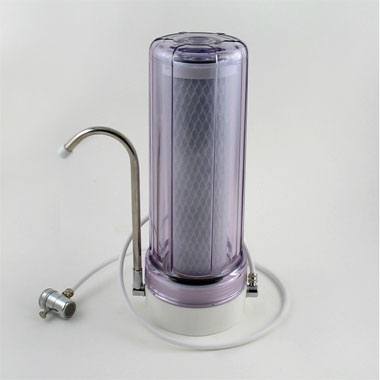 |
The Year that the EPA celebrates its 40th birthday, our classy Model 77 countertop filter celebrates its 25th. One thing that's impressive about the product is that the price hasn't changed in 25 years, and we can still call it "The World's Greatest $77 Water Filter." Another amazing thing is that the lifetime guarantee is still in effect. This week we sent replacement parts to a Boston customer with a 1991 Model 77 that was built with plastic spout and tube elbows rather than the current stainless steel parts. We've improved it a lot over the years, but we haven't changed the price. Pictured above is the full-sized clear version. Go here for other styles and cartridge options. |
The Quickest, Easiest Way to Save Water
Meat eating is seldom mentioned as a water conservation issue and many Americans fall for the notion that our nation's gluttonous water consumption can be brought under control if we can only remember to turn off the tap while we brush our teeth. – Hardly Waite, Pure Water Gazette.
I admit it: I’m kind of obsessed with saving water. Not only have I done everything possible at home (low-flow toilets, showerhead, washer/dryer, dishwasher, etc.), I even stealthily installed a faucet aerator in the bathroom of a favorite restaurant of mine. Since bathrooms in businesses get a lot of use, I couldn’t resist the 4.5 gallons per minute savings. But what if I told you that you could save even more water than me, without being a total weirdo? What if it was free?
In the United States, the average person uses about 69 gallons of water at home indoors per day (25,295 gallons per year) and about 100 gallons of water per day (36,500 gallons per year) if you include outdoor use like watering a lawn. While that is already a lot of water, this number doesn’t even represent all our water use. In fact, the water we use at home is just 3.6% of our total water use! Another 4.4% is industrial, and a whopping 92% is agricultural (food and fiber).
Home water use is declining in the U.S., and you can join in on the fun by saving about 25 gallons per day with standard conservation measures (like low-flow showers). But if you really want to use less water, you can save far more than that by making one tiny change in your diet on a weekly basis.
The trick here is to reduce the portion of water use that goes to agriculture (92%) by choosing different foods. Just as we can calculate a person’s “carbon footprint” to measure their total contribution towards climate change, we can do the same with water. Your “water footprint” includes both your direct and indirect water use (e.g. the water used to produce products you buy), and includes both the consumption and pollution of water. In the U.S. the average annual water footprint per capita is 750,777 gallons; the global average is less than half of that at 365,878 gallons.
So, here’s the quickest, easiest way to reduce your water footprint: Once per week, eat a soy burger instead of a hamburger. That’s it. That single swap saves you a whopping 579 gallons each time, and if you do it once per week it adds up to saving 30,111 gallons per year (more than your total indoor water use at home).
If you also drink a cup of soy milk instead of cow’s milk you can save another 47 gallons each time (2,447 gallons per year if you make the switch once per week). So between the burger and the milk, that’s a total savings of 32,559 gallons per person per year, enough to take 814 baths. Trust me, choosing soy products instead of cow products is a lot easier than trying to save that much water at home (and way easier than installing aerators at restaurants, which requires stealth).
Think about that: you could shut off your water at home (no toilet, no shower, no washing machine, etc.) and still have less impact than switching from beef to soy once per week*.
Inspired? The average American eats 57.3 pounds of beef and drinks 20 gallons of milk per year; swap that all out for soy and save 115,396 gallons of water each year! If you don’t like soy, there are plenty of other options.
You can educate yourself on how much water various foods and drinks require at a fantastic web site put out by the Water Footprint Network. (Before you click over, let me warn you: you may not want to know.)
So if you find yourself pulling your hair out because you can’t afford a front-loading washer, or if it starts to seem like a good idea to leave a spare aerator and a wrench in your backpack (just in case), remember there’s an easier way.
* Note that if you wanted to offset your outdoor water use as well as indoor use, be prepared to switch another 1.6 cups of milk a week for soy milk.
For the original, go here.
See also on this website details about how the US out-consumes much larger countries in overall water use because of our high meat consumption.
Pure Water Gazette Fair Use Statement
Osedax Live At the Bottom of the Ocean. They Were Discovered On A Whale Carcass in 2002.
Among the ocean’s strangest inhabitants are some tiny worms that devour bones. They inhabit and feed on dead whale skeletons and other bones on the sea floor. It was recently discovered that they have a unique ability to release bone-melting acid which makes their lifestyle possible.
The worms are called Osedax, and like all worms in their family they get by without mouth, anus, or gut. The digestion of the bone they live on is made possible by their partnership with bacteria. The worms are 3 to 4 cm long and they live in extremely hot and acidic vents in the sea.
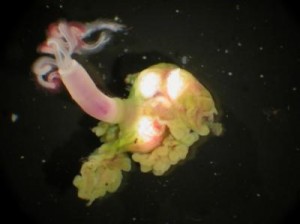 |
| These “bone-devouring worms,” whose official genus name is Osedax, are known to both eat and inhabit dead whale skeletons and other bones on the sea floor. They have a unique ability to release bone-melting acid. |
While it had been clear that the worms and their bacteria rely on nutrients such as collagen or fat from the bones they inhabit, until now it was a mystery how the worms penetrate the bone to access their nutrients. They appear to lack physical equipment necessary for drilling bone. The recently discovered process involves secretion of acid to demineralize the bone.
Researcher Sigrid Katz, perhaps the world’s foremost Osedax expert, says, “The discovery of Osedax shows that nutrition is even more diverse than we imagined, and our results are a step further in understanding the special relationship between the worm and its bacteria.”
Osedax are a female dominated society. Males never grow beyond 1 mm. In case you couldn’t tell, the worm in the picture is a female.
Adapted from Science Daily.
Water News of the Month
Here are a month's worth of water stories from the Pure Water Gazette's "Today's Top Water News" feature. Some are referenced in this issue, but there are a lot more to look at.
 |
Pure Water Products Main Website Expands Its Information Library
by Pure Water Annie
Our new Water Contaminant Index is a comprehensive A to Z (Acidic Water to Zinc) listing of many dozens of common and uncommon water contaminants and water treatment issues.
We're proud of it, and we hope you'll use it as a regular reference.
|
We think our new water contaminant index is the best and most comprehensive source of easily accessed information about water contaminants available anywhere.
Entries are concise, uniform, and well organized. Each entry contains general descriptive information, health effects, and water treatment details. The treatment methods are always placed at the very bottom of the page to make them easy to find.
All information is from reputable and reliable sources such as the EPA, the World Health Organization, and professional trade publications.
Here's a sample entry for a fairly obscure contaminant, DCM.
Dichloromethane (DCM)
Dichloromethane (DCM) is an organic chemical used as both a paint remover and ingredient, and in degreasing and cleaning fluids, chemicals, textiles, electronics, metals, and plastics. It's also used in agriculture, as a pesticide for strawberries and grains, as a method for removing the green from citrus fruits, and—though rarely nowadays—in the extraction of caffeine, cocoa, fats, spices and beer hops. It typically ends up in water as discharge from factories.
Health Effects of Dichloromethane
According to the World Health Organization, dichloromethane is toxic primarily when inhaled, affecting the central nervous system. In drinking water, there is suggestive evidence that is carcinogenic, and the International Agency for Research on Cancer (IARC) has classified it as a “possible human carcinogen.” According to the EPA, it can lead to liver problems:
Some people who drink water containing dichloromethane in excess of the maximum contaminant level [0.005 milligrams per Liter] over many years could experience problems with their liver and may have an increased risk of getting cancer.
Water Treatment for Dichloromethane
The EPA recommends granular activated carbon (GAC) and packed tower aeration (an air stripping method) for the treatment of dichloromethane.
Sources: EPA, WHO
This user-friendly contaminant index adds to an already information-rich website. According to James Washington, who put together the new contaminant index, “Our goal is to make purewaterproducts.com the best source on the world wide web for consumer information about residential water treatment products. The new index complements our very informative product offering pages as well as such collections as our Water Treatment Articles series and the Product Manuals section. The entire site is also searchable, so it’s easy to find what you’re looking for. We think you’ll be impressed with the quantity and the quality of our information.”
Our main website has three extensive information bases. These all link from the sidebar on the right of each page.
 |
Numerical Wizard B. Bea Sharper ferrets out the watery facts that Harper's misses
|
Facts You Would Have Learned Had You Read This Month's Top Water Stories Articles in the Pure Water Gazette
Percentage of arable land in Africa that is presently irrigated -- 5%.
Approximate number of Africans without access to potable water -- 300,000,000.
Percentage of US land that was under drought conditions during 2012--46.48%.
Percentage of the earth's fresh water supply that is held as ice and sub-glacial liquid in Antarctica--70%.
Years it took Russian scientists to drill through the ice covering Lake Vostok in the Antarctic--20.
Year in which Ecuador passed laws granting waterways rights similar to those enjoyed by humans --2008,
Year in which New Zealand granted the Whanganui River rights of "personhood"--2012.
Year in which the Clean Water Act was signed into law--1972.
Pints of water being consumed daily by women in Great Britain suffering from hypnatremia -- 44.
Price of a Pure Water Products Model 77 Countertop Water Filter in 1987 -- $77.
Price of a Pure Water Products Model 77 Countertop Water Filter in 2012 -- $77.
Percentage of Western European population that now drinks non-fluoridated water -- 97%.
Percentage of US population that lives in areas where water is still fluoridated -- 64%.
Age of lifelong friend of the environment and former EPA administrator Russell Train when he died in September 2012 -- 92.
Amount the town of Salem, NH has spent each of past 15 years in attempt to deal with TCE contamination -- $100,000 plus.
Pounds of mercury found recently in a municipal water pipe at Camp Lejeune, NC -- 8.
Percentage of municipal water in Gaza that is considered not drinkable by international standards -- 95%.
Percentage of US water that is used in homes -- 3.6%.
Percentage of US water that is used in agriculture--92%.
Rank of the effectiveness of diet change among the various strategies for saving water -- #1.
Pure Water Gazette Now in a New Format
Our information-stuffed variety magazine, the Pure Water Gazette, has taken another turn. The Gazette started as a paper publication in the 1980s. The last paper issue was mailed in 1997. It has existed since as an information-rich website whose navigation and aesthetic properties were suffering from years from neglect. Although the old site can still be seen here, the best of the old content has been relocated to a much more manageable and search-friendly blog-style format. The new site is up and running as a work in progress with over 375 articles and many more to come. At least one new article is added each day. The new site is at the old location, http://www.purewatergazette.net. Please visit!
|
